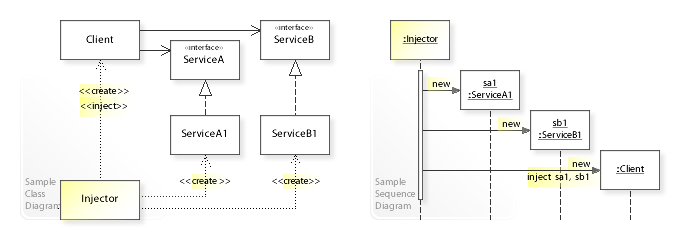- Dependency Injection is a design pattern in which an entity receives any entities that it depends on.
Structure §

Image from: Venderjoe https://commons.wikimedia.org/wiki/File:W3sDesign_Dependency_Injection_Design_Pattern_UML.jpg
Motivation §
- By using dependency injection we reduce the amount of coupling between entities. An object only needs to know about the interface it depends on.
- Separation of concerns between how an object is made and how it is used. We offload initialization somewhere else.
- Modularity in design. Because of a lack of coupling, we can modify the dependencies as needed without having to change the object.
- Inversion of control
- Dependency Inversion principle is upheld
Caveats §
- Abstraction and Indirection obscures details, leading to more difficult to trace code.
- Trades off the dependency of objects with a dependency to a framework instead (i.e., how we choose to implement the Dependency Inversion pattern)
- Complexity increases.
- Slight runtime penalties (although negligible).
Links §
